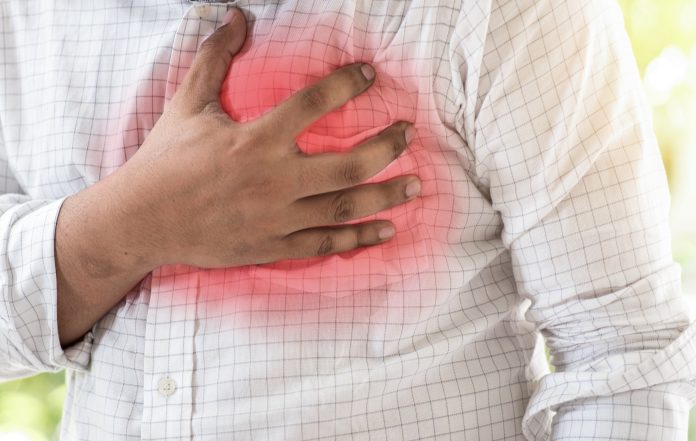
Adult survivors of cancer have a higher risk of heart failure and other cardiovascular diseases (CVD) later in life than adults without cancer, according to a large study led by Johns Hopkins Medicine researchers. The findings, led by a team at Johns Hopkins, resulted from studying decades of health information from more than 12,000 people participating in the NIH’s Atherosclerosis Risk in Communities (ARIC) study, a large study created to study the risk factors associated with the natural history of heart disease. The team observed that cancer survivors had a 42% higher risk of CVD than people without a cancer history. The study was published in the Journal of the American College of Cardiology,
“Because ARIC is a large population study, we could really take advantage of the detailed medical history of the participants that was collected over a significant period of time,” said first author Roberta Florido, MD, MHS, assistant professor of medicine and director of cardio-oncology at the Johns Hopkins University. Initiated in 1987, ARCS included 12,414 participants, with a mean age of 54 who were followed through 2020. Some 55% were female, 25% were Black and 3,250 were diagnosed with cancer.
“We detected not only that there was an increased risk of cardiovascular disease but also at the specific types of cardiovascular events.” The authors found a marked increase in the risk of developing heart failure (52% higher risk), followed by stroke (22% higher risk). There were no significant differences in the risk of coronary heart disease between those with and without cancer.
The team next studied whether those who developed cancer had more cardiovascular-related risk factors, such as obesity and diabetes. “We did not find that people who developed cancer had that much more of those risk factors, aside from smoking which is not that unexpected,” said Florido. “So that tells us there is something more going on.”
One clue was that some cancer types were associated with the higher risks for CVD. When examined by cancer type, they saw that leukemias and lymphomas, along with lung, breast, and colorectal cancers were significantly associated with a higher risk of CVD. While the ARCS study did not include detailed information on the cancer therapies patients received, the team wondered if specific cancer treatments contribute to increased risk of heart disease. For example, leukemia and lymphoma patients often receive anthracyclines—a highly cardiotoxic therapy. “Not surprisingly, this group had a really high risk of heart disease,” said Florido. Could it be that anthracyclines are contributing to the long-term risk of heart failure in this population? Or perhaps it was related to chest radiation where the heart is in the field of radiation? The one cancer patient group with the lowest risk for cardiovascular disease was prostate cancer patients. “They are often followed with surveillance or given local therapy so it’s possible that they’re less effected by cardiotoxic cancer therapy,” added Florido.
While this analysis did not discover the underlying cause(s) of the increased risk, cancer therapy certainly represents a plausible explanation, at least partly. Other potential causes may be factors that predispose an individual to both cancer and CVD, including hypertension, obesity, and diabetes. Inflammation may also be a contributor. “We know cancer generates a lot of inflammation and inflammation has been linked to heart disease,” said Florido.
“Smaller studies have hinted at a higher risk of cardiovascular death in some cancer populations, but overall, on a population level, this is the first, more rigorously accepted study that shows this,” said Florido. “I think this solidifies this concern about increased cardiovascular risk of cancer survivors.” The American Cancer Society estimates that there are more than 16.9 million adult survivors of cancer in the US today, and that the number will climb over 22.1 million by 2030.
While the reasons for the increased risk are not yet clear, the authors hope that the study results will guide prevention in cancer patients, particularly given the fact that more than 80% of adult patients diagnosed with cancer survive long term. “We know cancer patients focus a lot on preventing a recurrent cancer but often neglect other aspects of their health including screening for CV disease,” added Florido. “As physicians, I think we should be very aggressive in modifying what we can, in this case the increased risk CVD.” She suggests patients need to check their blood pressure and know what their blood pressure is, maintain a healthy weight and resume physical activity after treatment. Research shows that physical activities levels drop after patients receive chemotherapy. “So going back when they recover is very important; addressing those modifiable risk factors is key in this population even if it can’t always account for the increased risk of heart disease.”
For patients that do receive certain cardiotoxic treatment, the authors recommend diligent surveillance, monitoring patients with echocardiogram and/or stress tests throughout their lifetime. Florido added: “The goal of that is to detect early changes in cardiac function so that you can implement therapy and prevent progression.”













